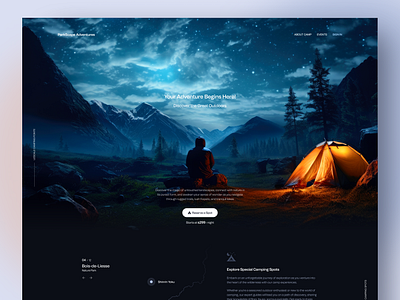Why Web Design and User Experience Must Go Hand-in-Hand for Success
Why Web Design and User Experience Must Go Hand-in-Hand for Success
Blog Article
How Efficient Web Design Can Increase Customer Experience and Conversions
In the increasingly affordable electronic landscape, effective internet style plays a crucial function in boosting user experience and driving conversions. As we check out the vital components that add to successful web design, it comes to be evident that the influence on customer satisfaction and conversion prices is extensive.
Significance of User-Centric Layout
In the realm of website design, prioritizing user-centric layout is paramount for producing efficient digital experiences. This technique focuses on comprehending the needs, choices, and actions of users, ensuring that electronic interfaces are obtainable and instinctive (Web design). By integrating individual feedback into the layout process, web designers can craft experiences that resonate with their target audience, inevitably bring about boosted involvement and fulfillment
User-centric style emphasizes functionality, which is necessary for maintaining individuals and lessening bounce prices. When users can browse a web site effortlessly, they are extra most likely to discover its web content and transform right into consumers.

Crucial Element of Effective Layout
Efficient format acts as the foundation of user-centric web layout, translating customer needs into aesthetic structures that assist in interaction. An efficient layout focuses on content through a clear power structure, guiding users' eyes to necessary information initially. This power structure is commonly established using spacing, size, and shade, making sure that vital elements attract attention.
One more key component is the usage of whitespace, which prevents congestion and enhances readability. Web design. Whitespace allows elements to breathe, making the general design appear cleaner and much easier to navigate. Additionally, consistency in design elements, such as colors and typefaces, fosters knowledge and count on, making it possible for customers to navigate the website with greater convenience
Grid systems can also be vital, supplying a framework that lines up web content rationally and cosmetically. This positioning enhances the individual experience by creating a structured visual circulation. Flexibility in design-- like responsive layout-- guarantees that web sites carry out well throughout numerous tools, catering to diverse individual preferences.
Ultimately, a reliable design not just captivates individuals yet likewise encourages them to engage even more deeply, ultimately fulfilling and driving conversions company goals. By concentrating on these vital elements, developers can create layouts that resonate with individuals and enhance their general experience.
Navigational Ideal Practices
Clear and user-friendly navigation is vital for improving user experience on a website. A well-structured navigating system permits users to discover details swiftly, which straight impacts their fulfillment and possibility of conversion - Web design. Implementing a hierarchical structure is vital; utilize categories and subcategories that logically group relevant material, making it simpler for site visitors to check out
Consistency in navigation components is also crucial. Make sure that menus, web links, and switches preserve uniformity in design, color, and positioning across all pages, providing individuals with an acquainted framework as they navigate. In addition, use descriptive tags for navigation products. As opposed to common terms, go with clear labels that properly show the content, assisting individuals in making notified decisions.

Mobile Responsiveness and Access

Ease of access, on the various other hand, concentrates on making sites usable for individuals with handicaps. This includes sticking to standards such as the Web Material Availability Standards (WCAG), which attend to issues like color comparison, message size, and keyboard navigating. By applying these criteria, web designers can develop inclusive experiences that satisfy a more comprehensive audience, thereby improving user interaction and fulfillment.
Moreover, mobile responsiveness and ease of access not just improve individual experience however additionally positively influence search engine positions. Online search engine prioritize mobile-friendly and accessible sites, making them most likely to show up in relevant search engine result. As a result, spending in these aspects of web style not only meets individual requirements however also adds to general business success via increased visibility and improved conversion rates.
Measuring Success Through Analytics
Tracking individual communications and behaviors with analytics is crucial for examining the success of a web site. By leveraging tools such as Google Analytics, businesses can gather Web design important information that exposes exactly how users engage with their site. Metrics such as bounce prices, typical session duration, and conversion rates give insights right into individual habits and can highlight areas for renovation.
Recognizing individual demographics and traffic resources better boosts an internet site's performance. This data enables internet designers to customize web content and design components to Click Here better fulfill the requirements of their target market. In addition, tracking details individual journeys aids identify prospective bottlenecks in the conversion funnel, enabling companies to enhance their internet layout as necessary.
A/B testing different layout aspects can provide concrete evidence of what reverberates with customers, enabling for educated decisions based on real-world performance. Ultimately, measuring success through analytics not just boosts customer experience however likewise drives conversions, guaranteeing that internet layout initiatives line up with business objectives.
Verdict
To conclude, efficient web design plays an essential function in enhancing customer experience and driving conversions. By focusing on user-centric principles, executing crucial format components, and making certain instinctive navigation, websites can engage a diverse target market. Mobile responsiveness and access additional contribute to a seamless interaction for all customers. Eventually, gauging success via analytics permits constant enhancement, making certain that layout approaches remain lined up with individual requirements, consequently fostering service development and success.
In the progressively competitive electronic landscape, efficient web style plays an essential function in boosting individual experience and driving conversions. By integrating individual responses right into the design procedure, internet developers can craft experiences that reverberate with their target audience, ultimately leading to raised involvement and fulfillment.
Ultimately, the importance of user-centric design exists in its capability to produce significant communications that drive conversions and foster long-term connections with customers, making it a crucial part of successful web design approaches.
Eventually, determining success via analytics not only improves customer experience yet also drives conversions, ensuring that internet layout efforts straighten with company purposes.In conclusion, reliable internet layout plays a critical best site role in enhancing user experience and driving conversions.
Report this page